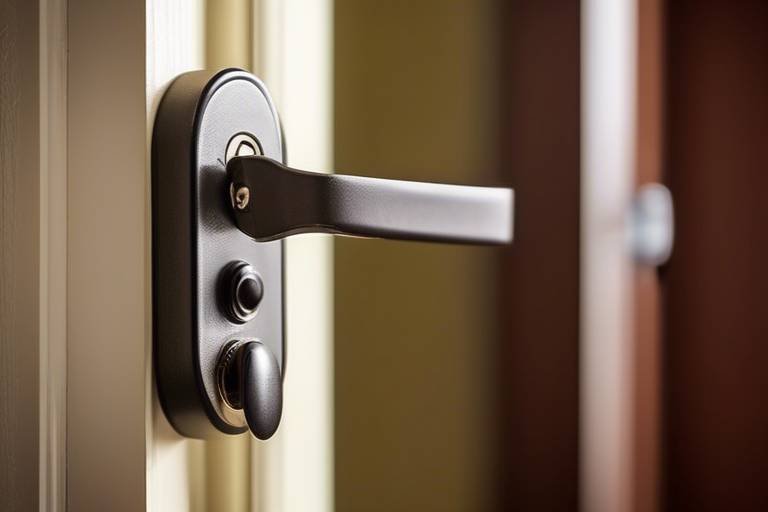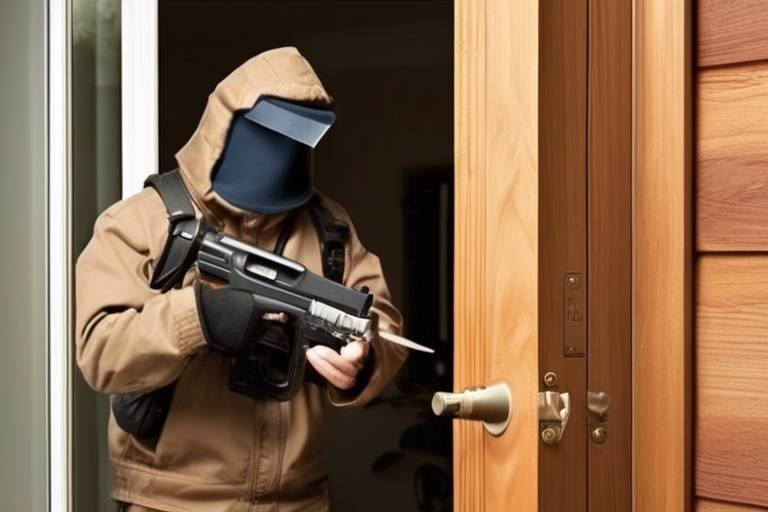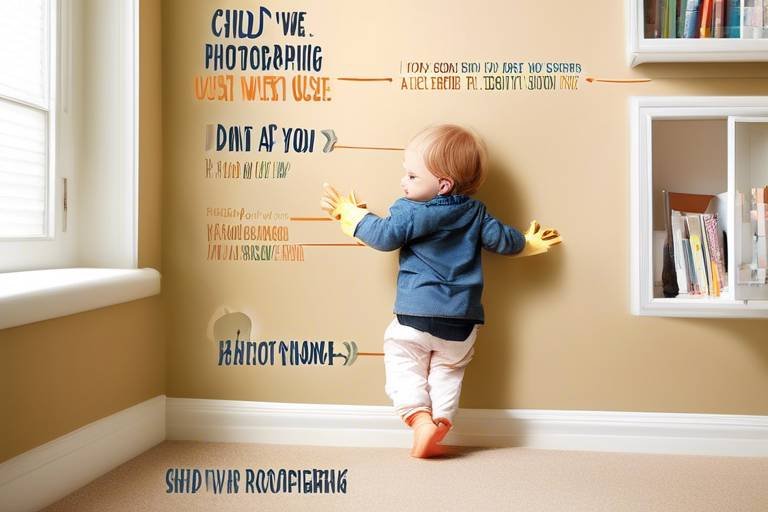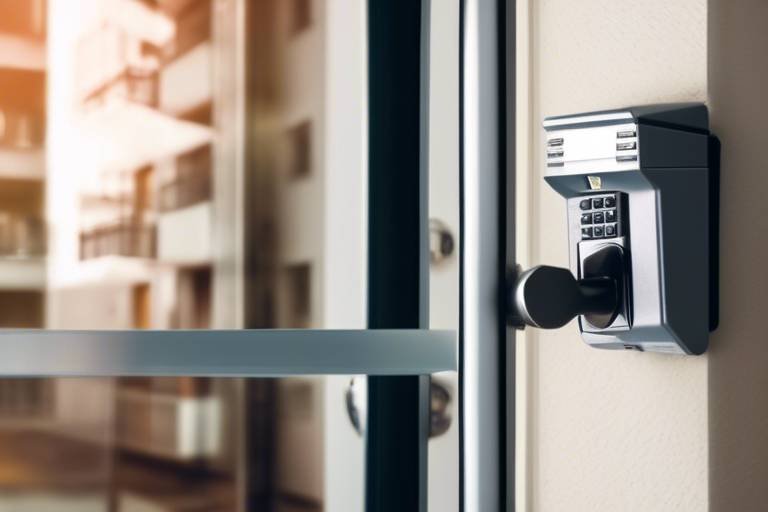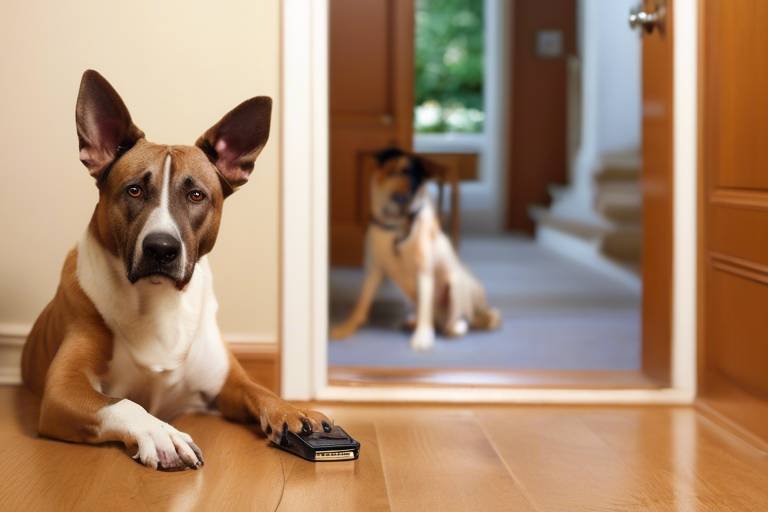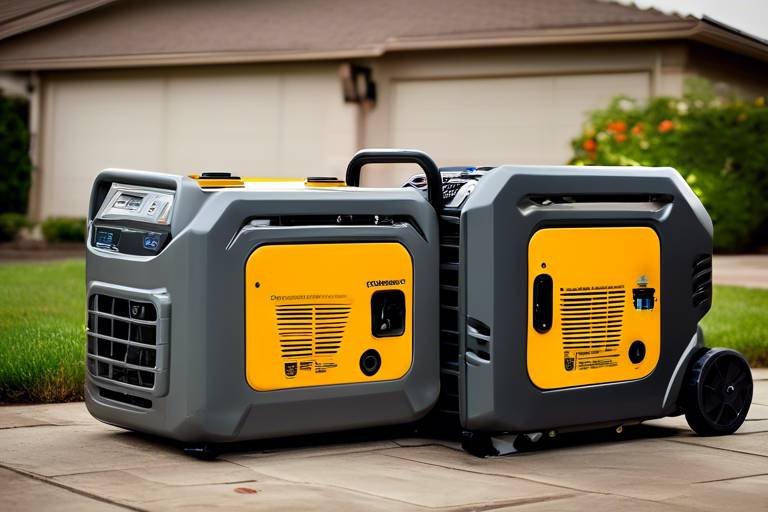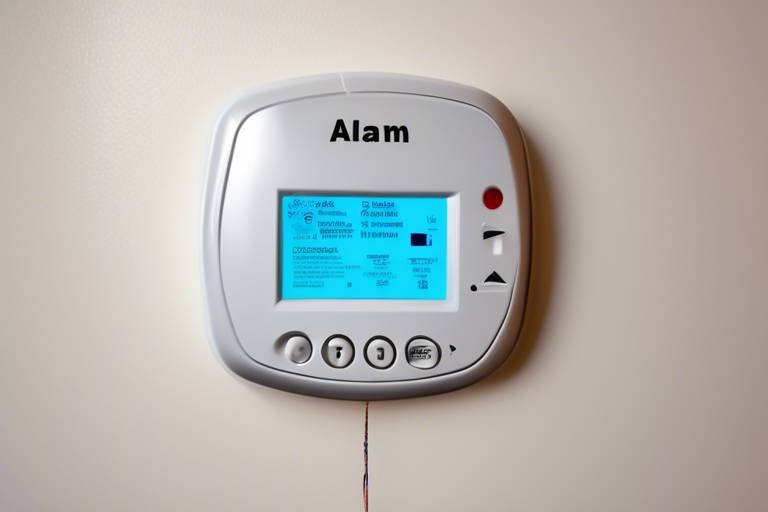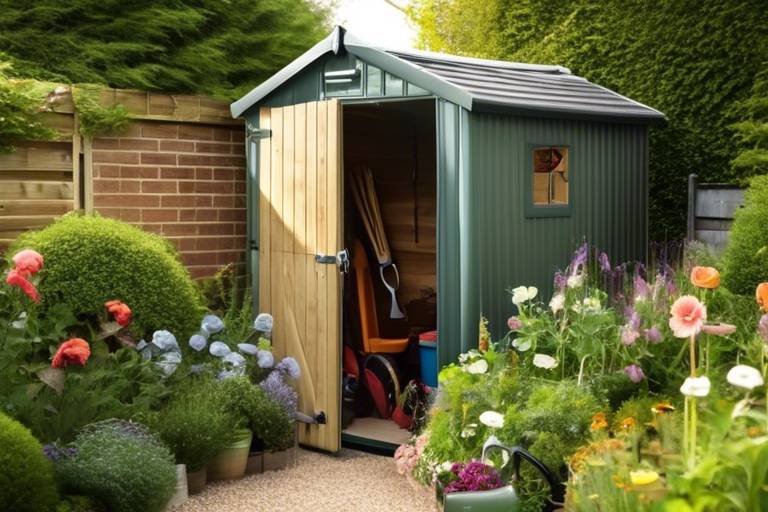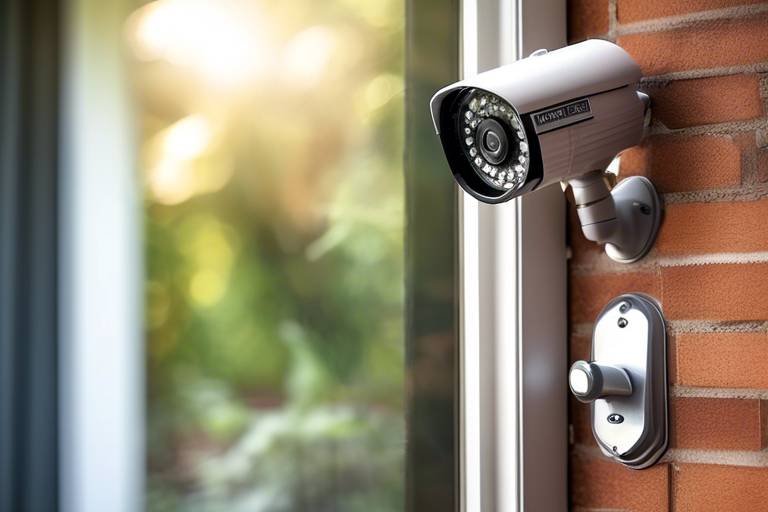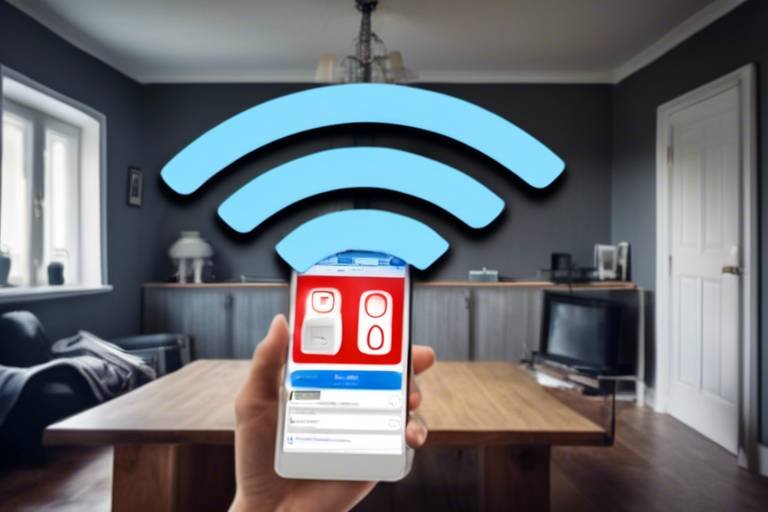Safe Electrical Practices at Home
When it comes to keeping your home safe, one of the most crucial aspects to consider is electrical safety. Electricity is a powerful force that, when mismanaged, can lead to devastating consequences, including fires, injuries, and even fatalities. Therefore, understanding safe electrical practices is essential for every homeowner. In this article, we will dive into the best practices for ensuring electrical safety, identify common hazards, and provide tips that can help you maintain a secure electrical environment in your home.
Recognizing potential electrical hazards is crucial for maintaining safety. Electrical risks can lurk in various forms throughout your household. For instance, frayed wires can expose live wires, leading to shocks or fires. Overloaded circuits can cause breakers to trip or, worse, lead to electrical fires. Wet conditions, especially in kitchens and bathrooms, can increase the risk of electric shock significantly. By being vigilant and aware of these hazards, you can take proactive steps to mitigate risks and ensure a safer living space.
Extension cords are incredibly handy, but they can also pose significant risks if misused. It's essential to understand the safe practices for using extension cords. Always check the load limits of your extension cord to avoid overheating. Placement matters too—never run cords under rugs or through doorways where they can be damaged. Additionally, choosing the right type of extension cord for your needs is vital. For example, outdoor cords are designed to withstand weather conditions, while indoor cords are not.
Selecting the appropriate extension cord is crucial for safety. When purchasing an extension cord, pay attention to the cord ratings, which indicate the amount of current the cord can safely carry. The length of the cord also matters; longer cords can lead to voltage drops, which may cause overheating. Always match the cord to the appliance's needs to prevent potential hazards. For instance, if you’re using a power tool that requires a lot of power, ensure the extension cord can handle it.
Understanding the differences between outdoor and indoor extension cords is essential for safety. Outdoor cords are specifically designed with heavy-duty insulation and weather-resistant materials to withstand rain, snow, and UV rays. On the other hand, indoor cords lack these features and should never be used outside. Using the right cord for the right environment can prevent accidents and prolong the life of your electrical equipment.
Identifying damaged extension cords is key to preventing accidents. Regularly inspect your cords for visible signs of wear, such as fraying, exposed wires, or burn marks. If you notice any of these signs, it's crucial to replace the cord immediately. Remember, it's always better to be safe than sorry; a damaged cord can lead to severe electrical shocks or fires, so don't take any chances!
Household appliances are a common source of electrical hazards. To use appliances safely, always follow the manufacturer’s instructions for installation and operation. Regular maintenance is also essential—check for any signs of wear and tear, and ensure that appliances are not overloaded. For example, avoid plugging too many devices into a single outlet, as this can lead to overheating and potential fires. By being cautious and following best practices, you can significantly reduce the risk of electrical accidents in your home.
Ground Fault Circuit Interrupters (GFCIs) are essential for protecting against electrical shock. These devices are designed to shut off power when they detect an imbalance in electrical current, which is particularly important in wet areas like kitchens and bathrooms. Installing GFCIs in these locations can be a lifesaver. Make sure to test your GFCIs monthly to ensure they are functioning properly, as this small step can make a huge difference in your household's safety.
Conducting regular electrical inspections can prevent hazards from developing. It’s wise to hire a qualified electrician to perform these inspections at least once every few years. During an inspection, the electrician will check for outdated wiring, overloaded circuits, and other potential risks. Keeping your electrical system up to date not only enhances safety but can also save you money in the long run by preventing costly repairs.
Educating everyone in the household about electrical safety is vital. Make it a family affair—discuss safe practices, such as not using appliances with wet hands and knowing how to unplug devices properly. Teach your kids the dangers of playing with electrical outlets and cords. You can even create a fun quiz or game to make learning about electrical safety engaging. Remember, knowledge is power, and the more informed your family is, the safer your home will be!
Being prepared for electrical emergencies can save lives. Familiarize yourself with essential emergency protocols, such as how to respond to electrical fires or shock incidents. Always have a plan in place for when to call for professional help. For instance, if someone receives an electric shock, do not touch them until the power is turned off. Instead, call for emergency services. Having a clear understanding of these procedures can make all the difference in a critical situation.
- What should I do if I see a frayed electrical cord?
Immediately stop using the cord and replace it. Frayed cords can lead to serious electrical hazards.
- How often should I have my electrical system inspected?
It's recommended to have your electrical system inspected by a qualified electrician every 3 to 5 years.
- Are GFCIs necessary in every home?
Yes, GFCIs are essential in areas prone to moisture, such as bathrooms, kitchens, and outdoor spaces.
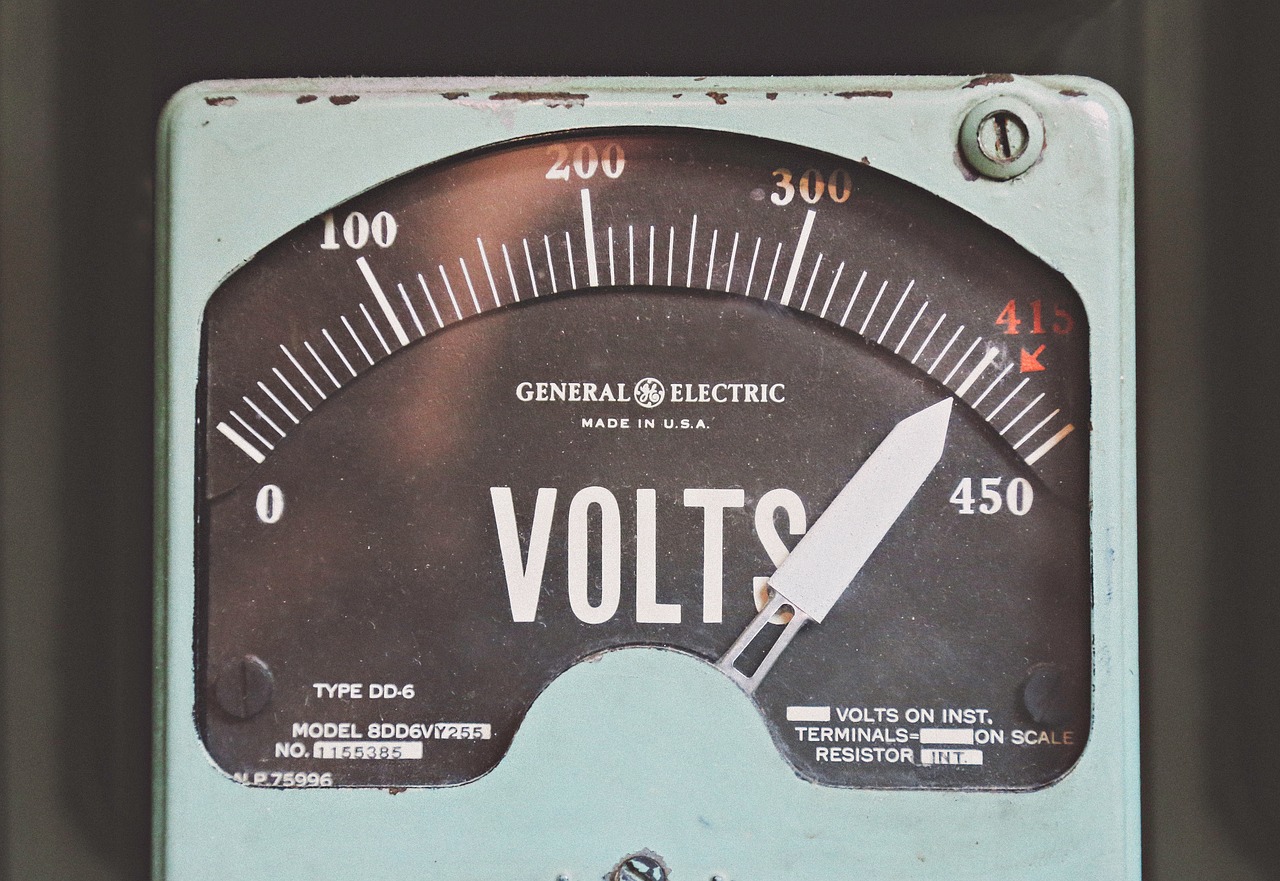
Understanding Electrical Hazards
This article explores essential guidelines for ensuring electrical safety in your home. It covers best practices, common hazards, and tips for maintaining a safe electrical environment.
Recognizing potential electrical hazards is crucial for maintaining safety in your home. Electricity, while incredibly useful, can pose significant risks if not handled properly. One of the most common hazards is frayed wires. These can occur due to wear and tear or improper use, exposing the conductive metal inside and creating a serious risk of shock or fire. It’s essential to regularly inspect all visible wiring and replace any cords that show signs of damage.
Another significant risk is overloaded circuits. When too many devices are plugged into a single outlet, it can lead to overheating and possibly cause a fire. You can avoid this by spreading out your electrical load across multiple outlets and using power strips wisely. Remember, not all power strips are created equal; some are designed to handle more load than others. Always check the specifications before plugging in your devices.
Additionally, wet conditions can greatly increase the risk of electrical hazards. Water is a conductor of electricity, meaning that using electrical devices in wet areas—like kitchens and bathrooms—can lead to serious accidents. It's vital to ensure that outlets in these areas are equipped with Ground Fault Circuit Interrupters (GFCIs) to cut off power in case of a short circuit.
To help you stay vigilant, here are some common household electrical hazards to watch out for:
- Exposed wires or damaged cords
- Overloaded outlets
- Using electrical devices near water
- Old or outdated wiring
- Improperly installed light fixtures
By understanding these hazards, you can better protect yourself and your loved ones. Remember, safety starts with awareness. Regularly assessing your home for these risks can prevent accidents before they occur. So, take a moment to walk around your house and identify any potential hazards. Your vigilance could be the key to a safer home environment.
Extension cords can be useful but pose risks if misused. This section discusses safe practices for using extension cords, including load limits, placement, and the importance of choosing the right type for your needs.
Selecting the appropriate extension cord is vital for safety. This subsection provides guidance on cord ratings, length, and usage scenarios to prevent overheating and electrical fires.
Understanding the differences between outdoor and indoor extension cords is essential. This section highlights the specific features of outdoor cords designed to withstand weather conditions, ensuring safety in various environments.
Identifying damaged extension cords is key to preventing accidents. This subsection discusses visible signs of wear, such as fraying or exposed wires, and emphasizes the importance of regular inspections.
Appliances are a common source of electrical hazards. This section covers best practices for using household appliances safely, including proper installation, maintenance, and avoiding overloading circuits.
GFCIs are essential for protecting against electrical shock. This section explains their function, where to install them, and why they are crucial in wet areas like kitchens and bathrooms.
Conducting regular electrical inspections can prevent hazards. This section outlines what to look for during inspections, the importance of hiring a qualified electrician, and how often these inspections should occur.
Educating everyone in the household about electrical safety is vital. This section discusses effective ways to teach family members about safe practices, emergency procedures, and the importance of respecting electricity.
Being prepared for electrical emergencies can save lives. This section covers essential emergency protocols, including how to respond to electrical fires, shock incidents, and when to call for professional help.
Q: What should I do if I see a frayed wire?
A: Immediately unplug the device and replace the cord. Do not use it until it has been repaired or replaced.
Q: How often should I inspect my electrical system?
A: It's recommended to conduct a thorough inspection at least once a year, or more frequently if you notice any issues.
Q: Are GFCIs necessary in every room?
A: While not necessary in every room, GFCIs are crucial in areas where water is present, such as bathrooms, kitchens, and outdoor spaces.

Proper Use of Extension Cords
Extension cords are like the Swiss Army knives of electrical needs—they're incredibly handy, but if misused, they can turn into a recipe for disaster. It’s essential to understand how to use them safely to avoid potential hazards. First off, always remember that extension cords are designed for temporary use. If you find yourself relying on them for an extended period, it might be time to consider a more permanent solution, such as additional outlets or a professionally installed circuit. This is crucial because overusing extension cords can lead to overheating and even electrical fires.
When using extension cords, it’s important to pay attention to their load limits. Each cord has a specific rating that indicates how much power it can handle safely. Exceeding this limit can cause the cord to overheat, which is a significant fire risk. So, before you plug in that space heater and your laptop into the same cord, take a moment to check the specifications. You can usually find this information printed on the cord itself or in the product packaging.
Placement of extension cords also plays a pivotal role in safety. Avoid running cords through doorways or under rugs, as this can lead to wear and tear. Instead, keep them in open areas where they’re less likely to be tripped over or damaged. If you have to run a cord across a walkway, consider using cord covers to prevent accidents. Additionally, never use a cord that feels hot to the touch, as this is a clear sign that it’s being overloaded or damaged.
Choosing the right extension cord is a bit like picking the right tool for a job. It’s not just about grabbing the first one you see; you need to consider the cord rating, which indicates how much power it can safely handle. For instance, a cord rated for 16-gauge wire can handle up to 1,625 watts, making it suitable for most household appliances. If you’re using it for heavier equipment, you might need a 14-gauge cord, which can handle up to 1,875 watts.
Additionally, consider the length of the extension cord. Longer cords can lead to voltage drops, meaning your appliances may not operate as efficiently. Ideally, choose the shortest cord that meets your needs. If you need to connect multiple devices, look for a power strip with built-in surge protection instead of daisy-chaining multiple extension cords together.
Understanding the difference between outdoor and indoor extension cords is vital for safety. Outdoor cords are designed to withstand the elements, featuring thicker insulation and weather-resistant materials. They often come with a bright color to make them more visible. Indoor cords, on the other hand, are not built for exposure to moisture and can become damaged if used outside. Always check the packaging to ensure you’re using the right type for your environment.
Identifying damaged extension cords is key to preventing accidents. Regularly inspect your cords for visible signs of wear, such as fraying or exposed wires. If you notice any damage, it’s best to replace the cord rather than risk using it. Here are some signs to look out for:
- Frayed or cracked insulation
- Exposed wires
- Burn marks or discoloration
- Unusual heat when in use
By staying vigilant and performing regular inspections, you can significantly reduce the risk of electrical accidents in your home.

Choosing the Right Extension Cord
When it comes to selecting the perfect extension cord, understanding its specifications is crucial for ensuring safety and functionality. Just like choosing the right tool for a job, an extension cord must be suited to your specific needs. One of the first things to consider is the cord rating, which refers to the amount of electrical current the cord can safely handle. Most extension cords come with a rating in amps or watts, and exceeding this limit can lead to overheating and potential fires. For most household appliances, a cord rated for 15 amps is sufficient, but if you're using high-draw devices like power tools or heaters, you may need a cord rated for 20 amps.
Another important factor is the length of the cord. Longer cords can be convenient but may also lead to a voltage drop, which can affect the performance of your appliances. Ideally, you should choose the shortest cord that meets your needs. If you find yourself needing a long extension cord, consider investing in a higher gauge cord, as it can handle more power over longer distances without losing efficiency. For instance, a 12-gauge cord is better for longer runs compared to a 16-gauge cord.
It's also essential to consider the usage scenarios for your extension cord. Are you using it indoors or outdoors? For outdoor use, look for cords that are designed to withstand the elements, often labeled as weather-resistant. These cords typically have thicker insulation and are made from materials that can endure rain, snow, and UV rays without deteriorating. Indoor cords, on the other hand, are generally lighter and are suitable for basic household tasks.
Finally, always check for the certifications on your extension cord. Look for cords that have been tested and certified by organizations such as Underwriters Laboratories (UL) or Intertek (ETL). These certifications mean the cord has been evaluated for safety and performance standards, giving you peace of mind that you're using a reliable product.
In summary, choosing the right extension cord involves considering its rating, length, intended use, and safety certifications. By paying attention to these factors, you can prevent potential hazards and ensure that your electrical needs are met safely and effectively.
- What gauge extension cord should I use for heavy appliances?
For heavy appliances, it's best to use a 12-gauge extension cord, as it can handle more power and reduce the risk of overheating.
- Can I use an indoor extension cord outdoors?
No, indoor extension cords are not designed to withstand outdoor conditions and can pose a safety risk if exposed to moisture or extreme temperatures.
- How do I know if my extension cord is damaged?
Look for visible signs of wear, such as fraying, exposed wires, or discoloration. If you notice any of these signs, it's best to replace the cord immediately.
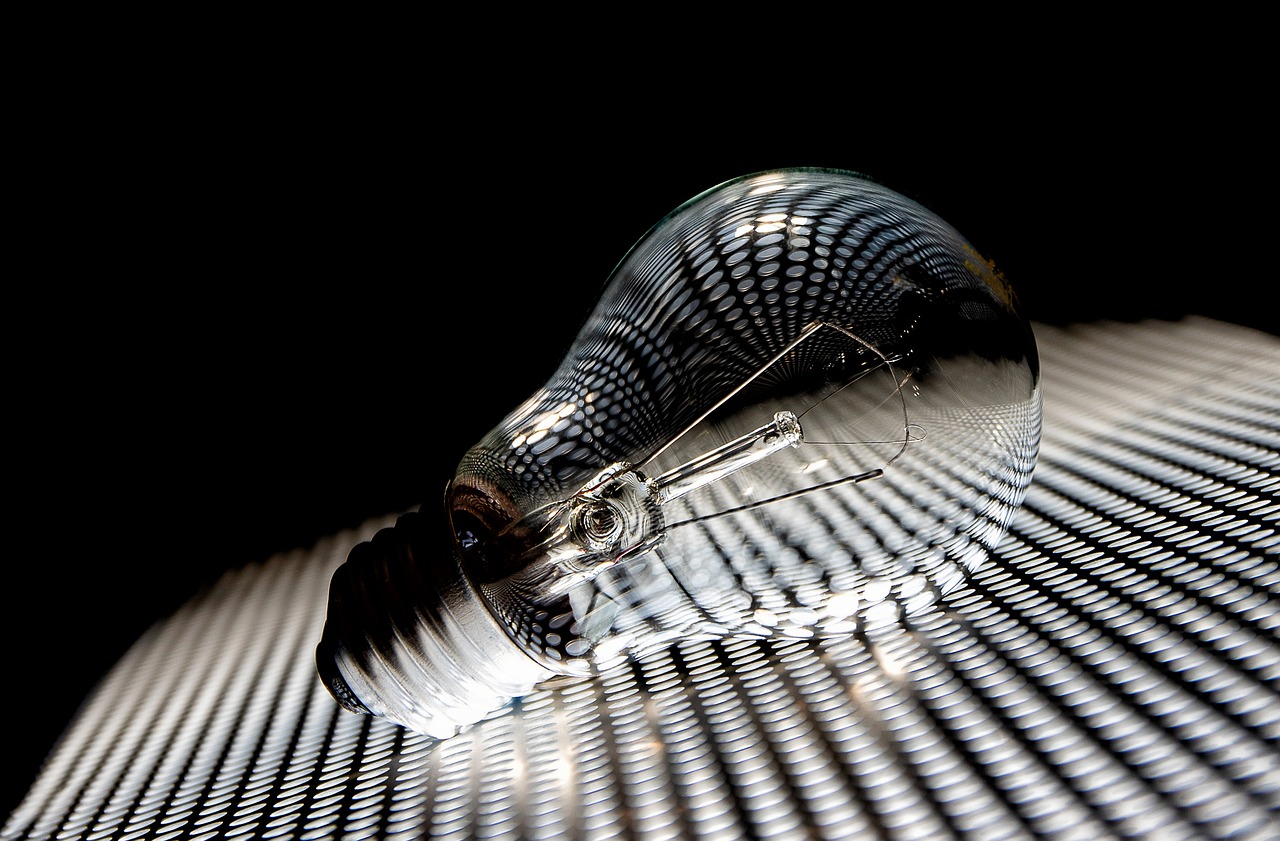
Outdoor vs. Indoor Cords
When it comes to extension cords, understanding the differences between outdoor and indoor varieties is crucial for ensuring safety and functionality. Indoor extension cords are typically designed for use in dry, controlled environments, while outdoor cords are built to withstand the elements. This distinction is not just a matter of convenience; it can significantly impact your safety and the longevity of your electrical devices.
Outdoor extension cords feature heavy-duty insulation and are often made with materials that resist moisture, UV rays, and extreme temperatures. This means you can confidently use them for outdoor activities, such as powering holiday lights or running tools in your backyard. On the other hand, indoor cords are not made to endure these harsh conditions and can easily become damaged if exposed to moisture or excessive heat.
Additionally, outdoor cords typically have a higher amp rating, which allows them to handle greater electrical loads. This is vital when using power tools or multiple devices at once. For example, if you're using a cord to power a lawnmower or an electric grill, you need that extra capacity to avoid overheating and potential fire hazards.
Here’s a quick comparison of key features:
| Feature | Indoor Cords | Outdoor Cords |
|---|---|---|
| Insulation | Standard insulation | Weather-resistant insulation |
| Durability | Less durable | Highly durable, built for harsh conditions |
| Amperage | Lower amperage rating | Higher amperage rating |
| Usage | Indoor use only | Suitable for outdoor use |
It's important to remember that using an indoor cord outdoors can lead to serious safety hazards. The insulation can break down, exposing wires and creating a risk of electric shock or fire. To avoid these dangers, always choose the appropriate cord for your specific needs. If you find yourself needing to extend power outdoors, invest in a high-quality outdoor extension cord that meets your requirements.
In conclusion, while both outdoor and indoor cords serve the fundamental purpose of extending electrical power, the differences in their construction and intended use are significant. Always prioritize safety by using the right type of extension cord for your environment.
- Can I use an indoor extension cord outside? No, using an indoor cord outdoors can pose serious safety risks, including electric shock and fire hazards.
- How can I tell if my extension cord is damaged? Look for fraying, exposed wires, or any discoloration. If you notice any of these signs, replace the cord immediately.
- What should I do if my extension cord gets wet? Disconnect it immediately and allow it to dry completely before using it again. If it shows any signs of damage, do not use it.

Signs of Damaged Cords
When it comes to electrical safety, one of the most crucial aspects is recognizing the . These seemingly innocent pieces of equipment can turn into potential hazards if not properly monitored. So, how can you tell if your extension cords are on the brink of failure? First and foremost, keep an eye out for frayed wires. If you notice any exposed wiring or the outer insulation wearing thin, it’s a clear indication that the cord is no longer safe for use.
Another telltale sign of a damaged cord is the presence of burn marks or discoloration. This can occur due to overheating, often caused by excessive load or poor connections. If you see any blackened spots, it’s time to retire that cord immediately. Additionally, if the cord feels unusually warm to the touch during use, this is a red flag that should not be ignored. Warm cords can lead to overheating and potentially cause electrical fires.
Moreover, pay attention to the plug itself. If the prongs are bent, broken, or not fitting snugly into the outlet, this could indicate a more serious issue. A loose connection can create sparks, leading to electrical shocks or fires. It's also important to regularly inspect the entire length of the cord for any signs of damage, such as kinks, twists, or cuts that could compromise its integrity.
To help you remember what to look for, here’s a quick checklist of signs to monitor:
- Frayed or exposed wires
- Burn marks or discoloration
- Warmth during operation
- Bent or broken prongs
- Kinks, twists, or cuts along the cord
Regular inspections are essential, especially if you frequently use extension cords for various appliances. If you notice any of these signs, it’s better to be safe than sorry—replace the cord rather than risk an accident. Remember, a little vigilance can go a long way in ensuring your home remains a safe haven.
Q: How often should I check my extension cords for damage?
A: It's a good practice to inspect your extension cords before each use, especially if they are frequently moved or stored away. Regular checks can help you catch any potential hazards early.
Q: Can I repair a damaged extension cord?
A: It’s generally not recommended to repair damaged extension cords. Instead, replace them with a new one to ensure safety. Repairs can often leave weak points that may fail again.
Q: What should I do if I find a damaged cord?
A: If you find a damaged extension cord, unplug it immediately and dispose of it properly. Do not attempt to use it again.
Q: Are there specific types of extension cords that are safer than others?
A: Yes, always choose extension cords that are rated for the specific use you have in mind—indoor or outdoor. Look for cords with built-in safety features like circuit breakers or GFCI protection for added safety.
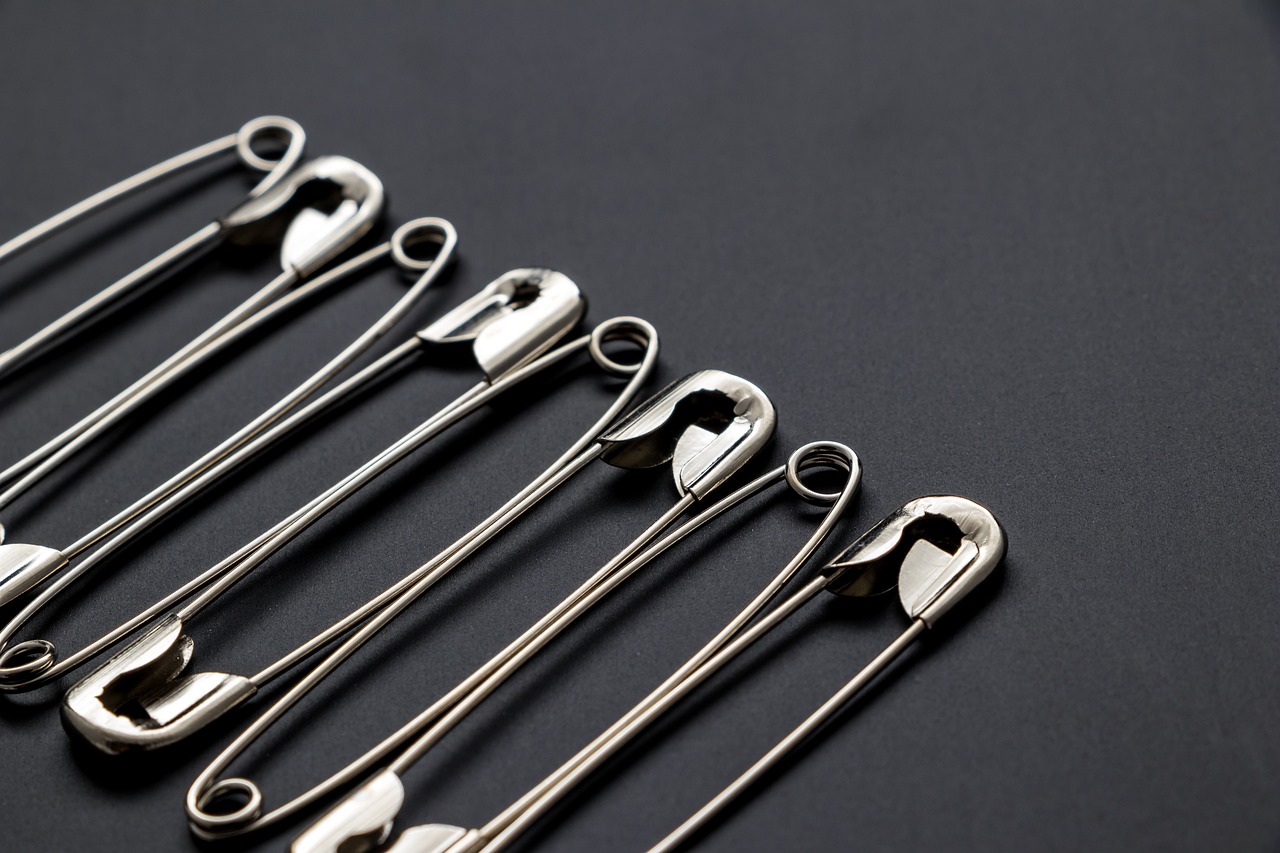
Safe Appliance Usage
When it comes to using appliances in your home, safety should always be your top priority. Appliances are an integral part of our daily lives, making tasks easier and more efficient. However, they can also be a source of electrical hazards if not used correctly. To ensure a safe environment, it’s crucial to follow some best practices. For starters, make sure to read the manufacturer's instructions for each appliance. This will help you understand the correct usage and any specific safety precautions you need to take.
One of the most common mistakes people make is overloading electrical circuits. Imagine trying to fit too many clothes into a washing machine; it just doesn’t work well, right? The same principle applies to your electrical system. Overloading can lead to overheating and even electrical fires. To avoid this, be mindful of how many appliances you plug into a single outlet. If you’re using multiple devices, consider distributing them across different outlets to balance the load.
Another important aspect of safe appliance usage is ensuring that appliances are properly installed. For instance, if you’re setting up a new dishwasher or washing machine, it’s essential to ensure that the connections are secure and leak-proof. A poorly installed appliance can lead to water damage and electrical issues. If you're unsure about the installation process, it’s always a good idea to consult a professional electrician.
Regular maintenance is also key to keeping your appliances safe. Just like you wouldn’t drive a car without regular oil changes and tune-ups, your appliances need attention too. Check for any signs of wear and tear, such as frayed cords or unusual noises. If you notice anything out of the ordinary, it’s best to address it immediately. For example, if your microwave starts sparking, it’s a clear sign that something is wrong and it should be unplugged and inspected.
Moreover, be cautious when using appliances near water sources. This includes kitchens and bathrooms where moisture levels are higher. Using a hairdryer while standing on a wet bathroom floor is a recipe for disaster. Always ensure that your hands are dry and that you’re using appliances away from water to minimize the risk of electric shock.
In summary, safe appliance usage hinges on proper installation, regular maintenance, and awareness of your surroundings. By following these guidelines, you can significantly reduce the risk of electrical hazards in your home. Remember, a little caution goes a long way in ensuring the safety of your loved ones.
- What should I do if my appliance starts making strange noises?
If your appliance starts making unusual noises, it’s best to unplug it immediately and inspect it for any visible issues. If you can't identify the problem, consider calling a professional for help.
- Can I use extension cords with my appliances?
While extension cords can be useful, they should only be used temporarily. Ensure that the cord is rated for the appliance's power requirements and avoid overloading the circuit.
- How often should I inspect my appliances?
It’s a good practice to inspect your appliances at least once a year for any signs of damage or wear. More frequent checks may be necessary for heavily used appliances.
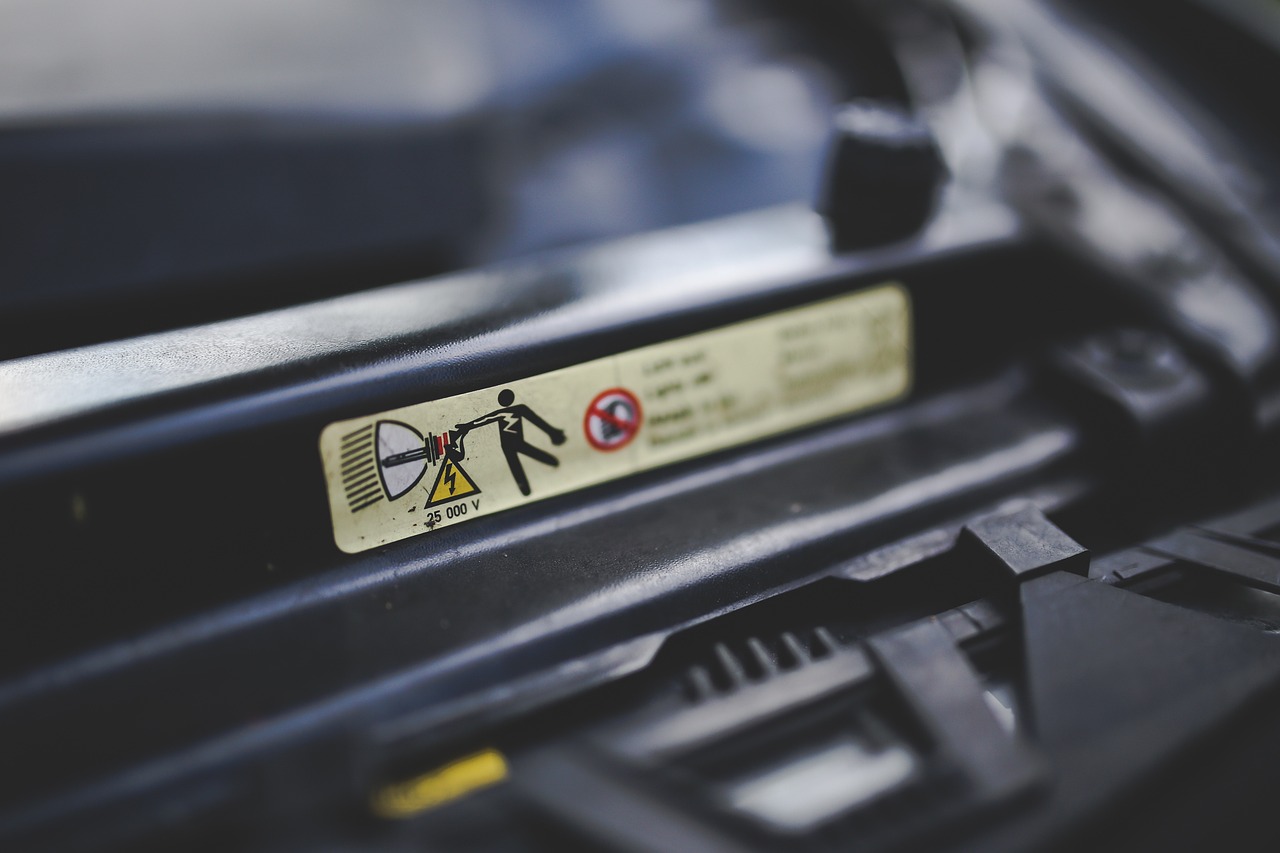
Importance of Ground Fault Circuit Interrupters (GFCIs)
When it comes to electrical safety, Ground Fault Circuit Interrupters (GFCIs) are your best friends. These nifty devices are designed to protect you from electrical shock by monitoring the flow of electricity. If they detect an imbalance between the outgoing and incoming current, they act quickly, cutting off the power in a fraction of a second. This rapid response can be the difference between a minor scare and a serious injury. Imagine the peace of mind knowing that a small device can help keep you and your loved ones safe from the hidden dangers of electricity!
So, where should you install these protective devices? GFCIs are particularly crucial in areas where water and electricity mix, such as:
- Kitchens: Think about all the appliances that use water, like dishwashers and sinks.
- Bathrooms: Wet hands and electrical outlets are a dangerous combination.
- Garages and Basements: These areas often have outlets near water sources or are prone to dampness.
- Outdoor Areas: If you’re using tools or appliances outside, GFCIs can prevent shocks caused by wet conditions.
Not only do GFCIs protect against electric shocks, but they also help prevent electrical fires. By monitoring the electrical current, they can detect faults that might lead to overheating and potential fires. This makes them an essential component of any modern home’s electrical system.
In terms of installation, GFCIs can be found in two main forms: outlet-type GFCIs and circuit breaker-type GFCIs. Outlet-type GFCIs replace standard outlets, while circuit breaker-type GFCIs are installed in your electrical panel. Both types serve the same purpose, but the choice between them often depends on your specific needs and the layout of your home.
It’s also important to regularly test your GFCIs to ensure they are functioning correctly. Most GFCI outlets come with a test button that allows you to check if the device is working. Make it a habit to test these devices at least once a month. If you find that a GFCI is not resetting or is tripping frequently, it’s a sign that you should call a qualified electrician to take a look.
In summary, GFCIs are a small but mighty part of your home’s electrical safety system. They not only protect you from shocks but also help in preventing electrical fires. By installing GFCIs in the right places and maintaining them regularly, you can create a safer environment for yourself and your family.
Q: How do I know if I need a GFCI?
A: If you have outlets in areas prone to moisture, such as kitchens, bathrooms, or outdoors, you definitely need GFCIs.
Q: Can I replace a regular outlet with a GFCI outlet myself?
A: If you are comfortable with basic electrical work, you can replace an outlet, but if you're unsure, it's best to hire a professional.
Q: How often should I test my GFCI?
A: It’s recommended to test your GFCI outlets at least once a month to ensure they are working properly.
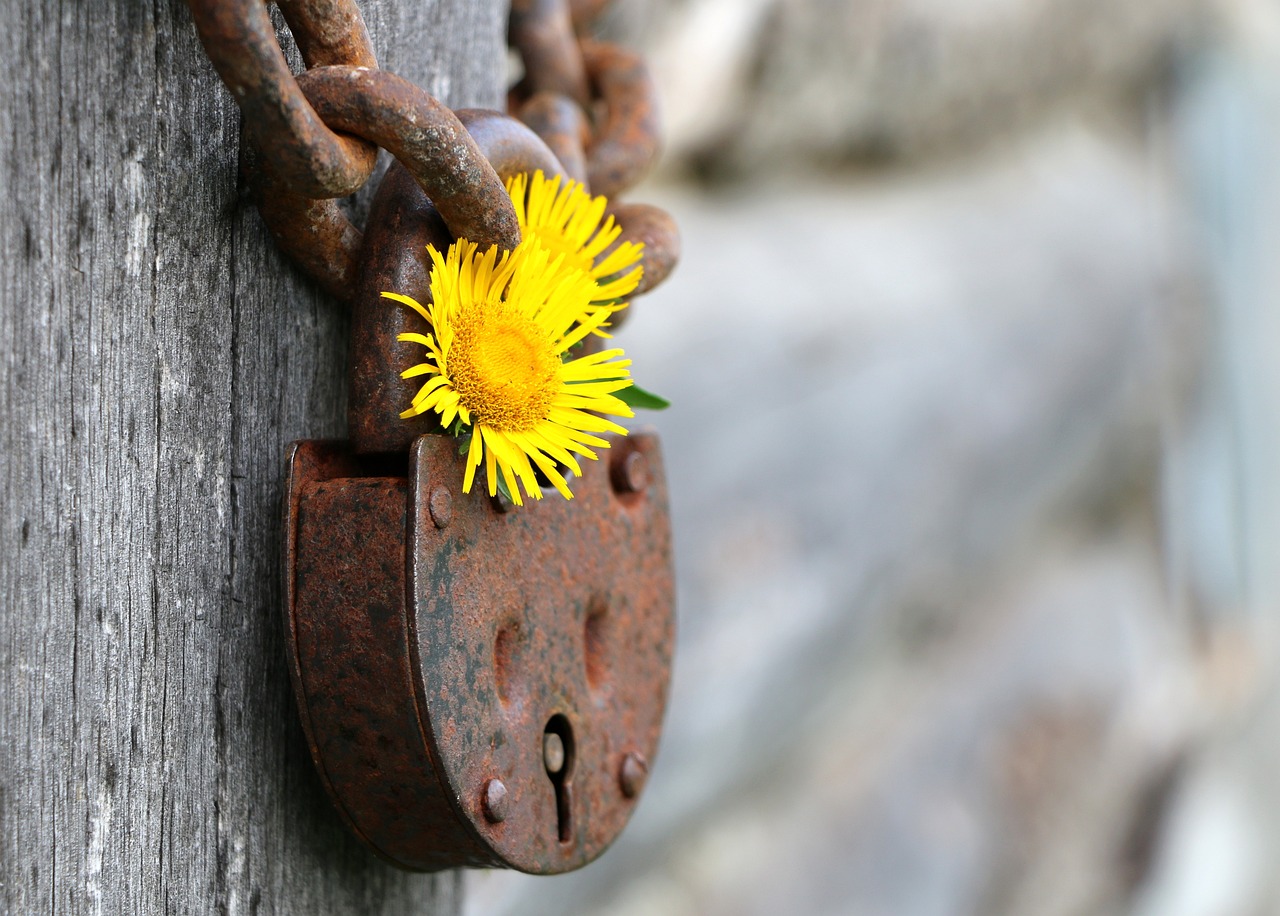
Regular Electrical Inspections
When it comes to ensuring the safety of your home, are not just a good idea; they’re absolutely essential. Think of your home’s electrical system as the nervous system of your body. Just as you wouldn’t ignore persistent aches or pains, you shouldn’t overlook the signs that your electrical system may need a check-up. Over time, wear and tear can lead to potential hazards, making it crucial to stay ahead of any issues before they escalate into dangerous situations.
So, what exactly should you be looking for during these inspections? First off, it’s important to check for any visible signs of damage, such as frayed wires or burnt outlets. These can be red flags indicating that something is amiss. Additionally, be on the lookout for flickering lights or circuit breakers that frequently trip. These symptoms can often be the first indicators of a more significant problem lurking beneath the surface.
While it might be tempting to perform these inspections yourself, it’s always best to hire a qualified electrician. Professionals have the expertise and tools necessary to conduct a thorough assessment of your home’s electrical system. They can spot potential hazards that you might miss and provide solutions tailored to your specific needs. It’s recommended to schedule these inspections at least once every three to five years, but if your home is older or you’ve recently made significant renovations, more frequent inspections may be warranted.
Here’s a quick overview of what a professional electrical inspection typically includes:
| Inspection Area | Description |
|---|---|
| Wiring | Check for any signs of wear, damage, or outdated wiring that may not meet current safety standards. |
| Outlets & Switches | Inspect for loose connections, proper grounding, and any signs of overheating. |
| Breaker Panel | Examine the panel for any signs of corrosion or tripped breakers that could indicate overloads. |
| Smoke Detectors | Ensure that smoke detectors are functioning correctly and are placed in the right locations. |
In addition to hiring a professional, it’s also wise to educate yourself on the basics of electrical safety. Knowing how to identify potential hazards can empower you to take preventive measures. For example, if you notice that certain outlets are warm to the touch or if your circuit breakers are constantly tripping, these could be signs that something needs immediate attention. Keeping a close eye on these indicators can help you maintain a safe living environment.
Remember, electrical safety is not just a one-time effort; it’s an ongoing commitment. By prioritizing regular inspections and staying informed about the state of your electrical system, you’ll be taking proactive steps to protect your home and loved ones from potential dangers. So, don’t wait for the warning signs to appear—schedule that inspection today!
- How often should I have my electrical system inspected? It’s generally recommended to have an inspection every three to five years, but more frequent checks may be necessary for older homes or after major renovations.
- Can I perform my own electrical inspection? While you can check for obvious signs of damage, it’s best to hire a qualified electrician for a thorough inspection.
- What are the signs that my electrical system needs immediate attention? Look for flickering lights, tripped circuit breakers, warm outlets, or any burning smells coming from outlets or appliances.

Educating Family Members on Electrical Safety
When it comes to electrical safety, knowledge is power. Educating your family members about safe practices can make a world of difference in preventing accidents at home. After all, electricity is a powerful force—it can light up our lives but can also lead to serious hazards if not handled properly. So, how do we ensure that everyone in the household understands the importance of electrical safety?
First and foremost, start with the basics. Explain what electricity is and how it works. Use simple terms and relatable analogies. For instance, you might compare electricity to water flowing through a pipe—just as we need to be careful about leaks and blockages in plumbing, we must also respect the flow of electricity and avoid short circuits or overloads. This foundational knowledge will help family members understand why certain practices are necessary.
Next, consider hosting a family workshop or safety day. Gather everyone together and go through the key safety practices that should be followed. This could include:
- Never overloading outlets.
- Understanding the significance of Ground Fault Circuit Interrupters (GFCIs) and where they should be installed.
- Recognizing signs of electrical hazards, such as flickering lights or buzzing sounds.
- Understanding the importance of keeping electrical appliances away from water.
Make it interactive! Use demonstrations to show how to safely unplug devices, how to inspect cords for damage, and even how to correctly reset a tripped circuit breaker. Engaging in hands-on activities can reinforce learning and make the information stick. Plus, it’s a great way to bond as a family!
Another effective method is to create a family safety plan. Discuss what to do in case of an electrical emergency, such as a shock incident or an electrical fire. Make sure everyone knows how to respond—who to call, where to find the fire extinguisher, and how to shut off the main power supply if necessary. You could even create a simple poster with these steps and hang it in a common area of your home as a constant reminder.
Finally, encourage open communication about electrical safety. Create an environment where family members feel comfortable reporting potential hazards or asking questions. Regularly check in with each other about safety practices and remind everyone that safety is a shared responsibility. Just like a team working together to score a goal, your family can work together to keep your home safe from electrical hazards.
In conclusion, educating your family about electrical safety is not just an option; it's a necessity. By fostering a culture of safety and awareness, you can significantly reduce the risk of electrical accidents in your home. Remember, a little knowledge can go a long way in protecting your loved ones from the dangers of electricity.
| Question | Answer |
|---|---|
| What should I do if I see a frayed electrical cord? | Immediately unplug the device and replace the cord or the appliance. Do not use it until it is fixed. |
| How often should I check my electrical outlets? | It's good practice to check your outlets at least once a year for any signs of wear or damage. |
| What are GFCIs, and why are they important? | Ground Fault Circuit Interrupters are devices that cut off electricity to prevent shocks. They are crucial in wet areas like kitchens and bathrooms. |

Emergency Preparedness for Electrical Issues
When it comes to electrical emergencies, being prepared can make all the difference between a minor inconvenience and a major disaster. It's not just about having the right tools on hand; it's about understanding how to respond effectively when things go wrong. Imagine a scenario where a sudden electrical fire breaks out in your home. Panic can easily take over, but having a plan can keep you calm and collected.
First and foremost, it's crucial to know the signs of electrical problems. For instance, if you notice flickering lights, unusual smells, or buzzing sounds from outlets, these could be indicators of deeper issues. In such cases, don’t hesitate to turn off the power at the circuit breaker and call a professional. Remember, safety comes first!
Additionally, having a well-stocked emergency kit is vital. This kit should include:
- Flashlights and extra batteries
- A fire extinguisher rated for electrical fires
- First aid supplies
- Emergency contact numbers
- Basic tools for shutting off power
By keeping these items accessible, you can respond quickly to any electrical issue that arises. It’s also wise to conduct regular drills with your family to ensure everyone knows what to do in case of an emergency. Just like fire drills in school, practicing your emergency response can help everyone stay calm and act swiftly.
Another key aspect of preparedness is understanding when to call for professional help. If you experience an electrical shock or someone in your home does, it’s essential to seek immediate medical attention, even if the shock seems minor. Electricity can cause internal injuries that aren't always immediately visible.
Moreover, if you ever find yourself dealing with an electrical fire, remember the acronym PASS:
- Pull the pin from the fire extinguisher.
- Aim low at the base of the fire.
- Squeeze the handle to discharge the extinguisher.
- Sweep side to side until the fire is out.
Always ensure that you have the right type of fire extinguisher for electrical fires, which is typically a Class C extinguisher. Never use water on an electrical fire, as this can cause the fire to spread or even lead to electrocution.
Finally, regular maintenance of your home's electrical system can significantly reduce the likelihood of emergencies. Schedule routine inspections with a qualified electrician to identify potential hazards before they escalate. This proactive approach not only keeps your home safe but also gives you peace of mind.
In conclusion, being prepared for electrical emergencies is about awareness, having the right tools, and knowing how to respond effectively. By educating yourself and your family, you can ensure that when electrical issues arise, you'll handle them with confidence and care.
Q: What should I do if I see sparks coming from an outlet?
A: Immediately turn off the power at the circuit breaker and avoid using that outlet until a qualified electrician can inspect it.
Q: How often should I have my electrical system inspected?
A: It's recommended to have your electrical system inspected at least every 3-5 years, or more frequently if you notice any issues.
Q: Can I use water to put out an electrical fire?
A: No, using water on an electrical fire can be extremely dangerous. Always use a Class C fire extinguisher instead.
Frequently Asked Questions
- What are some common electrical hazards at home?
Common electrical hazards include frayed wires, overloaded circuits, and wet conditions. It's essential to regularly inspect your electrical systems and be aware of these risks to maintain a safe environment.
- How can I safely use extension cords?
To use extension cords safely, avoid overloading them, ensure they are placed away from high-traffic areas, and choose the right type for your needs. Always check for signs of damage before use.
- What should I look for when choosing an extension cord?
When selecting an extension cord, consider the cord's rating, length, and the specific usage scenarios. Make sure the cord can handle the required wattage to prevent overheating.
- What is the difference between indoor and outdoor extension cords?
Indoor cords are designed for dry environments, while outdoor cords are built to withstand weather conditions. Outdoor cords typically have thicker insulation and are more durable to prevent damage.
- How can I identify a damaged extension cord?
Look for visible signs of wear, such as fraying, exposed wires, or discoloration. Regular inspections are crucial to ensure your cords remain safe for use.
- What are Ground Fault Circuit Interrupters (GFCIs) and why are they important?
GFCIs are devices that protect against electrical shock by cutting off power when they detect a fault. They are especially important in wet areas like kitchens and bathrooms to ensure safety.
- How often should I conduct electrical inspections?
It's recommended to conduct electrical inspections at least once a year. Hiring a qualified electrician can help identify potential hazards and ensure everything is up to code.
- How can I educate my family about electrical safety?
Teach your family members about safe practices, emergency procedures, and the importance of respecting electricity through discussions, demonstrations, and informative materials.
- What should I do in case of an electrical emergency?
In an electrical emergency, such as a shock or fire, immediately call for professional help. If it's safe, turn off the power source and avoid using water to extinguish electrical fires.



